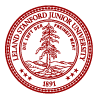Designing Musical Games :: Gaming Musical Design

One of the most exciting areas of music technology development is happening in the realm of gaming and interactive virtual space. As designers create ever more innovative game experiences featuring rich graphics, fast multiplayer networking and next-generation controllers, new techniques for creating immersive music and sound for games to complement and showcase these advances are not only possible but necessary.
This hands-on workshop will explore cutting edge techniques for building interactive sound and music systems for games and 2D/3D rendered environments. To better understand the link between virtual space and sound, students will learn the basics of 3D art and modelling, game programming, interactive sound synthesis and computer networking using Open Sound Control.
During this intensive week, students will build their own fully functional interactive musical game world. Each student will leave the workshop with a playable demo of their own custom musical game experience.
Topics and technologies covered will include:
● Procedural Music and Sound
● Algorithmic and Generative music
● Interactive Audio Programming with Pure Data, HEAVY, LibPD, SuperCollider and ChucK/Chunity
● 3D Art and Modelling with 3DS Max and Maya
● Game Design and Development with Unreal Engine 4 and Unity3D
While this workshop will introduce broad concepts incorporating game design, 3D art, audio programming and musical composition, expertise in all these are not required. Approaches for creating interactive musical environments for beginners ranging to advanced users will be discussed and investigated. Basic knowledge of gaming technologies, music and computer programming is highly suggested.
*** WOMEN IN MUSIC AND GAMING SCHOLARSHIPS ***
We're very excited to offer up to two full tuition scholarships to promote the engagement of young women in the fields of game design and development and interactive electronic and computer music. Submissions are due by JUNE 1, 2017. Learn more about this exciting opportunity at:
*** ONLINE COURSE NOW AVAILABLE ***
Remote participants who elect to take the course online can watch and participate in the course using Skype or Google Hangouts. Online participants can take as active a role as they wish in the workshop, working on their own projects with help from our teaching team.
About the Instructors
Composer and researcher Rob Hamilton explores the converging spaces between sound, music, and interaction. His creative practice includes mixed-reality performance works built within fully rendered, networked game environments, procedural music engines and mobile musical ecosystems. His research focuses on the cognitive implications of sonified musical gesture and motion and the role of perceived space in the creation and enjoyment of sound and music. Dr. Hamilton received his PhD from Stanford University’s Center for Computer Research in Music and Acoustics (CCRMA) and currently serves as an Assistant Professor of Music and Media at Rensselaer Polytechnic Institute. More information: homepages.rpi.edu/~hamilr4 or robhamilton.io or @robertkhamilton
Chris Platz is a virtual world builder, game designer, entrepreneur, and artist who creates interactive multimedia experiences with both traditional table top and computer based game systems. He has worked in the industry with innovators Smule and Zynga, and created his own games for the iOS, Facebook, and Origins Game Fair. His real claim to fame is making interactive stories & worlds for Dungeons and Dragons for over 30 years. ;) He holds s BA in Business & Biotechnology Management from Menlo College, and an MFA in Computer Animation from Art Institute of CA San Francisco.From 2007-2010 Chris served as an Artist in Residence at Stanford University in Computer Graphics. Chris is currently the Assistant Chair of Animation and Assistant Professor at California College of the Arts. Since 2011 he has continued at Stanford as a Visiting Scholar at the Center for Computer Research in Music and Acoustics, where his thesis focuses on large networked virtual worlds where the animations, creatures, & terrain all produce music, in a real-time game engine, using UDKOSC, Unreal Developer Kit Open Sound Control. He helped publish several SIGGRAPH technical papers on procedural 3D environments, character & creature design, voice input controls, and the evolving fields of augmented and virtual reality. His piece, ECHO::Canyon was featured at the Autodesk Gallery Design Night as an interactive performance piece using the Unreal 3 game engine and the Oculus Rift virtual reality headset. This piece was also featured at the Game Developer's Conference for 2014.


